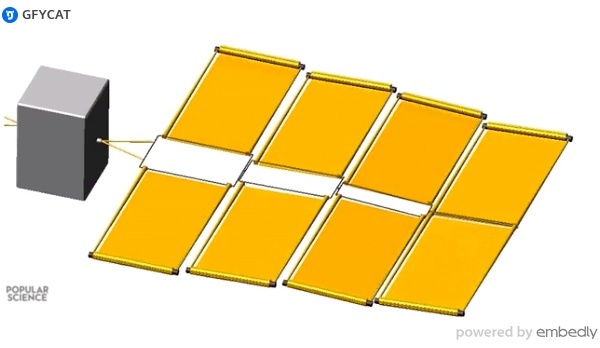31.05.2017
NASA is testing solar panels that unfurl like Fruit Roll-Ups in space
The experiment is set to fly to the space station this week
3165 Views
31.05.2017
The experiment is set to fly to the space station this week



A fresh batch of supplies and science experiments are slated to launch to the International Space Station on Thursday. One of the experiments tucked inside the trunk of SpaceX’s Dragon capsule will be ROSA, a new type of solar array that will be tested in space for the first time.
ROSA stands for Roll-Out Solar Array. It’s a new way of deploying solar arrays in space. Satellites and spacecraft typically unfold their solar panels like an accordion. But ROSA’s solar panels stretch out on a boom and then unroll themselves in a way that’s been compared to a tape measure or a party favor. Because it's more compact, ROSA's creators at the Air Force Research Laboratory think it could make spacecraft smaller and therefore cheaper.
If all goes well, the Dragon capsule carrying ROSA as well as other experiments and supplies will reach the ISS on Sunday.
ROSA will eventually spread its wings while it’s attached to the outside of the station. Over seven days of testing, researchers will analyze how the system performs as they deploy and retract the solar panel array in the vacuum and extreme temperatures of low Earth orbit. They’ll monitor its strength and durability, and keep an eye on how its shape changes when the station is in full-sunlight versus full-shadow. They’ll record all this using video cameras and sensors embedded on the test array.
It can cost as much as $10,000 for every pound of stuff that launches into space, and the price adds up quickly when you’re talking about a 150-foot solar panel array to power a geostationary satellite. Ground tests and modeling studies suggest that ROSA could cut solar array costs by as much as 25 percent. The creators envision that ROSA-type panels will eventually be used on satellites that provide radio and television broadcasts, weather forecasting, GPS, and other services that we use every day.
Quelle: PS